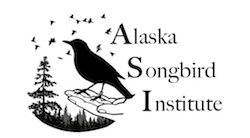Avian Keratin Disorder (AKD)

Scientists at the USGS Alaska Science Center began investigating this phenomenon in 1999. Since that time they have identified more than 3,000 affected Black-capped Chickadees in Alaska. This is the highest concentration of gross deformities ever recorded in a wild bird population! Deformities have also been recorded in Northwestern Crows, Downy Woodpeckers, Steller’s Jays, Black-billed Magpies, and many other species have also been observed with beak deformities throughout the state. Growing numbers of reports from North America and Europe suggest that AKD may be spreading to a larger geographic area.
Early research focused on environmental contaminants, nutritional deficiencies, and parasites, but no clear evidence linking these to AKD was found in Alaskan birds. A breakthrough finally occurred in 2016 when scientists at the USGS identified a novel virus in Alaskan Black-capped Chickadees with AKD. It was named Poecivirus after the genus that chickadees belong to. They have since confirmed a strong association between Poecivirus and beak deformities in chickadees and also detected a closely related virus in other species with similar beak deformities. Together, this evidence suggests that Poecivirus is a likely candidate cause of AKD. USGS scientists continue to study the virus, hoping to understand more about how it may be contributing to beak deformities and how it is transmitted. For more information you can view ASI’s 2021 presentation on AKD, archived on our YouTube channel. You can also learn more at the Alaska Science Center website.
Have you seen a bird with a deformed bill? Please help Alaskan scientists by reporting your sighting.
